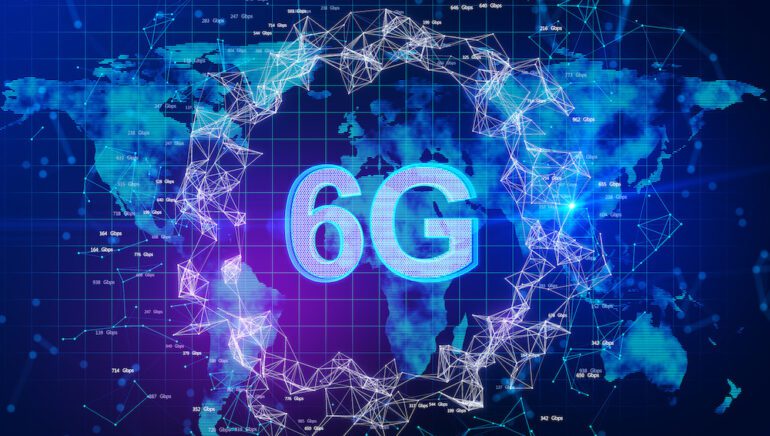TL;DR:
- 6G networks, driven by AI, are set to revolutionize communication and computing.
- Companies are preparing for 6G despite 5G’s global rollout not being complete.
- Expected applications include mixed reality, holography, virtual humans, and autonomous driving.
- AI-native 6G networks will self-learn and reduce operational costs.
- 6G’s higher speeds, reduced latency, and integration of digital and physical realms make it a leapfrog technology.
- Challenges include spectrum allocation, energy efficiency, and industry collaboration.
Main AI News:
Sixth-generation (6G) mobile networks, empowered by artificial intelligence (AI), are on the brink of reshaping the intersection of communication and computing in a hyperconnected world. Experts predict that this transformative technology will revolutionize daily life, blending digital and physical experiences in unprecedented ways.
“In the past, we talked about the Internet of Things, but with 6G, we talk about an intelligent or smart Internet of things,” emphasizes Qin Fei, President of the Communications Research Institute at Vivo, a Chinese mobile phone manufacturer that has been intensively investing in 6G since 2020.
Remarkably, communication and technology companies are already charting their course for 6G wireless networks, even as 5G is yet to achieve global ubiquity. With advancements in data latency, security, reliability, and real-time global data processing capabilities, experts like Qin believe that 6G is poised to revolutionize both leisure and work. Among the anticipated applications for 6G networks, Vivo envisions mixed reality, holographic and multi-sensory communication, interactive 3D virtual human interfaces, collaborative robots, and automated driving.
AI’s Pivotal Role in Next-Generation Networks
Anticipated to be deployed by 2030, 6G holds the promise of being a game-changer for two primary reasons. Firstly, it will enable the seamless convergence of computing and mobile communications. Secondly, it will seamlessly integrate the digital and physical realms, ushering in novel sensory experiences for users.
Qin asserts, “6G will provide super communication and ubiquitous information, converging computing services to serve as the foundation for an interconnected and converged physical and digital world.” Capgemini shares this view, predicting that 6G networks will facilitate immersive, ubiquitous, and sensory digital experiences on a colossal scale, effectively making the network our “sixth sense,” according to a consultancy report.
The Fusion of AI and Communication
As wireless networks evolve in complexity with each generation, they increasingly rely on other technologies to harness their power and enhance operational efficiency. 6G is expected to pioneer the concept of AI-native networks, where AI is deeply embedded in the network infrastructure. This integration will enable the network to learn, self-manage, become more autonomous and, ultimately, reduce operational costs.
“When we are designing the 6G network, we’re going to use AI technology in designing the air interface and also in managing the 6G network,” explains Qin. Machine learning and AI-based network automation will play a pivotal role in simplifying network management and optimization. Qin goes on to liken the 6G network with AI to a diligent student, one that self-trains, self-learns, and continually grows in prowess.
The Disruptive Potential of 6G
While 6G standards and specifications are still in development, experts concur that it will be a leapfrog technology. Thanks to its higher speeds (potentially 10 to 100 times faster than 5G), significantly reduced latency, improved connectivity, security, and reliability, as well as its ability to seamlessly integrate the digital and physical realms, 6G is poised to be transformative.
“For 5G, it’s primarily a communication technology – that’s its core,” notes Qin. “But for 6G, in addition to enhanced communications technology, it will encompass computing and other related services.” Furthermore, 6G is expected to provide broader geographical coverage, effectively covering the entire planet and connecting all types of machines.
Qin predicts that 6G networks will also popularize the use of digital twins – virtual replicas of products or processes used to predict real-world performance. The enhanced connectivity, robust sensing capability, and vast data collection capacity of 6G networks will make this possible.
Vivo’s Forward Vision
Vivo envisions that 6G will facilitate dozens, if not hundreds, of new services across various industries. The company is actively developing prototype 6G mobile technologies based on three key trends: communication plus sensing, communication plus computing, and communication plus AI.
For instance, Vivo is working on a prototype capable of collecting users’ biometric data to monitor their health while they sleep. In this technological vision, a person’s bedside phone could serve as a medical monitoring device, alerting medical professionals to any health issues or abnormal behavior in real time.
Additionally, Vivo sees great potential in virtual and mixed reality glasses as another application for 6G. These glasses could revolutionize video streaming, providing a more immersive experience by leveraging the enhanced capabilities of 6G networks.
Lastly, 6G is poised to support self-driving or autonomous cars, with its computational power and network capabilities being instrumental in gathering and processing various data inputs required for safe autonomous driving.
Overcoming Challenges for 6G Rollout
Despite the promise of 6G, there are substantial challenges ahead. Network capacity expansion and finding the right telecommunications spectrum to support its rollout are critical considerations. To maximize coverage and penetration, lower band electromagnetic waves, such as the 6.4 to 7.1 gigahertz range, are being explored.
Minimizing energy consumption and carbon emissions is another formidable task. 6G networks will demand significantly more computing power than their predecessors, necessitating cooperation between suppliers and users to optimize energy efficiency.
Ultimately, the success of 6G hinges on delivering exceptional experiences and services for consumers and businesses. As Qin emphasizes, collaboration across various industries and lessons learned from 5G development will be instrumental in avoiding pitfalls and ensuring the seamless development of 6G infrastructure, mobile terminals, and applications.
Conclusion:
The advent of 6G networks, empowered by AI, signifies a significant paradigm shift in the digital interaction landscape. This technological advancement will open up new opportunities across industries, revolutionizing communication, computing, and sensory experiences. To fully harness the potential of 6G, collaboration among stakeholders is essential, while addressing challenges in network capacity and energy efficiency will be pivotal for its successful market integration.

